Havana, with its two million inhabitants, is the largest city in the Caribbean and at the same time one of the most attractive and charming ones. The happy Cuban soul is everywhere, and the beautiful setting with the many old and colorful buildings from the colonial era as well as the abundance of 1950s American cars make the city unique in the world.
Cuba has an attractiveness like few other places. The story of Fidel Castro’s Communist Cuba in the tropics just a few miles from the United States has been a source of inspiration to many and to the annoyance of others. Whatever one thinks, the Cuban people and country provide unforgettable times.
The era with the many vintage Amercian cars of the 1950s is like a step back in time to the American-influenced Cuba as if nothing had happened in the last several decades. The houses are also largely preserved from that time, so the Havana town center is quite homogeneous without many modern buildings between the old, low-rise buildings in Spanish-inspired style.
If you make a trip into the countryside, the life-affirming Cuban soul follows along, and everywhere you meet smiles, joy, beautiful scenery, quaint towns and tropical beaches. Rent a car or join a tour to magnificent cities and gems in the lush tropical nature. New memorable places are everywhere.
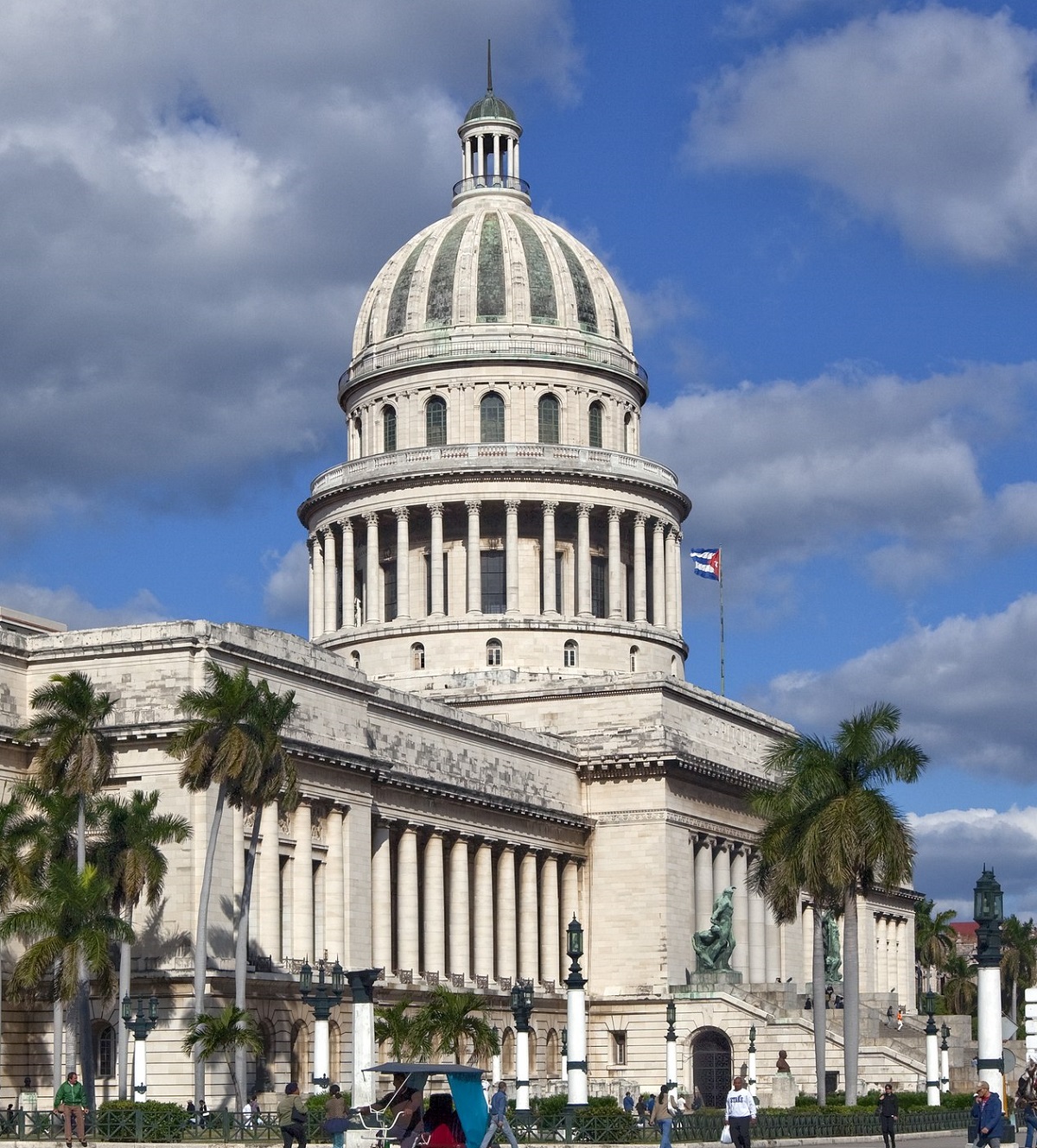
El Capitolio is a magnificent building constructed 1926-1929 to house Cuba’s Legislative Assembly. There was already talk of the construction of the Capitolio in 1912, but it was only under President Gerardo Machado that the great building was realized.
The Capitolio was a congressional building until 1959, when the Cuban Revolution was carried out, and after the revolution, the Capitolio was abandoned and fell into disrepair over the following decades before being reopened to the public and later renovated to its original decor.
The area was originally a swampy area that lay west of Havana’s old town from colonial times. With the development of the city and the country, railways were built, and one of them went from the west to Havana, and it was here that a railway station was established, which was the terminus of the line.
There were architects Raúl Otero and Eugenio Rayneri Piedra who spearheaded the design of El Capitolio, which was built in neoclassicism with the US Capitol in Washington as a model. However, Havana’s Capitolio is no copy of the American version, and it is also slightly larger than the US Congress building.
Both from the outside and from the inside, the Capitolio is an impressive structure with a fantastic decoration. Inside stands a 17 meter tall allegorical statue of a woman, symbolizing the Republic of Cuba. The statue La Estatua de la República was created in Rome by the Italian Angelo Zanelli. The statue was produced in bronze and it was gilded with 22 carat gold.
In the entrance hall, you can also see a 24-carat diamond encased in gold in the floor. The diamond is called the Star of Cuba, and it marks the 0 kilometer stone for distances in Cuba. Today, the diamond is a replica of the original that was stolen in 1946 to be returned later that year to President Ramón Grau San Martín.
The large bronze entrance doors to the Capitolio are also interesting. They are adorned with reliefs depicting the history of Cuba from the Spanish conquest in 1492 by Christopher Columbus to the time when the Capitol was built. When you walk further into the building, you can see highlights such as the decoration of the dome, the walking hall and the large halls in the building.
Plaza de Armas is Havana’s oldest square, and on it you can see the monument to the rebel hero Carlos Manuel de Céspedes. On the west side of the square is the beautiful governor’s palace, Palacio de los Capitanes Generales, which was built in beautiful baroque style in 1780.
The mansion was formerly the residence of the country’s presidents, and today it is set up as Havana’s City Museum, Museo de la Ciudad. The building is worth seeing, and the museum’s exhibitions are particularly interesting and give a good impression of Havana and the city’s colonial period.
On the eastern side of the Plaza de Armas, you can see the 18th-century Hotel Santa Isabel, originally called the Palacio del Conde de Santovenia, and the classicist temple building El Templete.
Calle Obispo is Havana’s central pedestrian street. It starts from the Plaza de Armas, and on a walk along the street you can experience Cuban street life as well as many beautiful buildings such as the National Bank/Banco Nacional de Cuba (no. 211), Hotel Florida (no. 252) and Hotel Ambos Mundos (no. . 153).
In Hotel Ambos Mundos you can see room 511, where Ernest Hemingway wrote: “For whom the bell tolls?”. The building at Calle Obispo 117-119 was built in 1570, making it Havana’s oldest house. At the eastern end of the street is El Floridita, which was, among other things, one of Havana’s favorite places for Ernest Hemingway and many Hollywood stars from the 1950s.
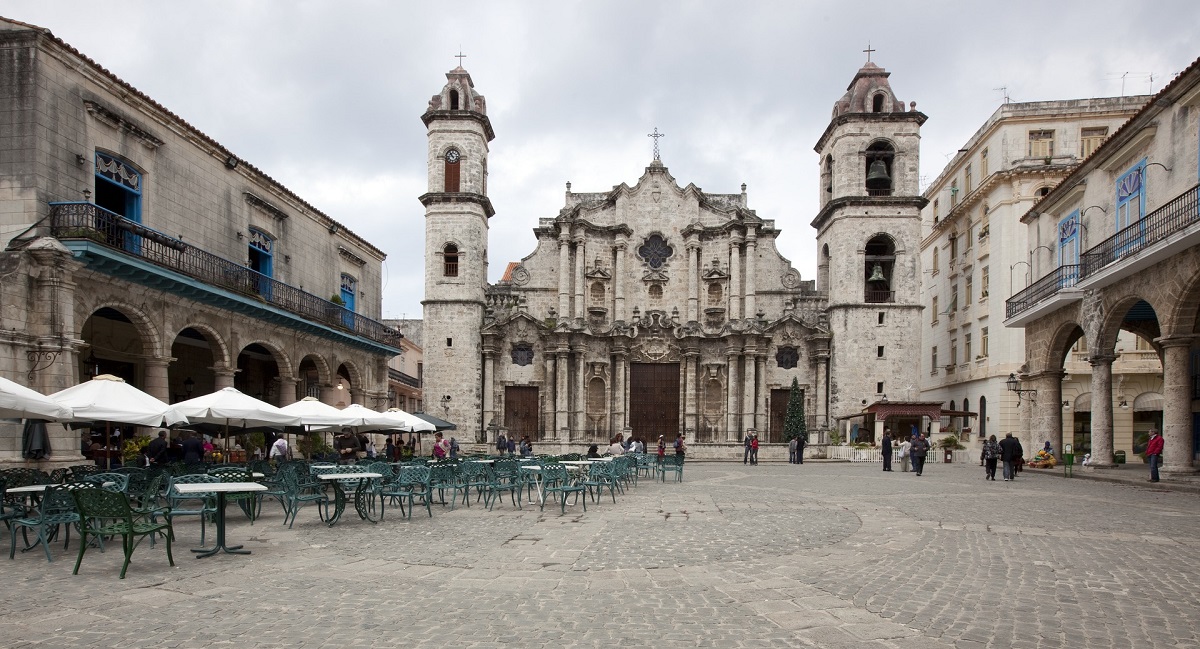
Catedral de la Havana is the name of Havana’s beautiful baroque cathedral, which was built in the period 1748-1777. The cathedral was consecrated in 1782, and in 1793 the building was elevated to its current status as the city’s cathedral. It functions today as one of Cuba’s many Catholic cathedrals.
The plans for the building were approved in 1727, and it was the Jesuit order that was responsible for the construction. The order started construction in 1748, and the church was completed, although the Jesuits were exiled from Cuba during the construction period in 1767 by the Spanish king Carlos III. Later in the same century, the cathedral became the resting place of Christopher Columbus. It was from 1796 to 1898.
The cathedral was built with a central nave, two side naves and eight side chapels, and the interior of the church is absolutely worth seeing with, among other things, a number of sculptures, paintings and frescoes. For example, you can see a sculpture from 1632 of Saint Christopher, who is Havana’s patron saint. It was made by Martín de Andújar Cantos in Seville, Spain.
Plaza de la Catedral is Havana’s cathedral square and is known as one of Central America’s most beautiful squares. The surrounding 18th-century buildings are elegant, and music or other events often create a lovely atmosphere here.
The area was originally swampy before it was drained and used by the Spanish as a shipyard for the fleet. After the construction of the city’s cathedral, other buildings followed, and the Plaza de la Catedral became home to some of Havana’s most beautiful mansions.
Today, of course, you can see the city’s cathedral, Catedral de la Havana, in the square, and in addition to the church building, you can also visit the museum Museo del Arte Colonial in the square. You can also notice the statue of the flamenco dancer Antonio Gades, which stands by the house Palacio del Conde Lombillo.
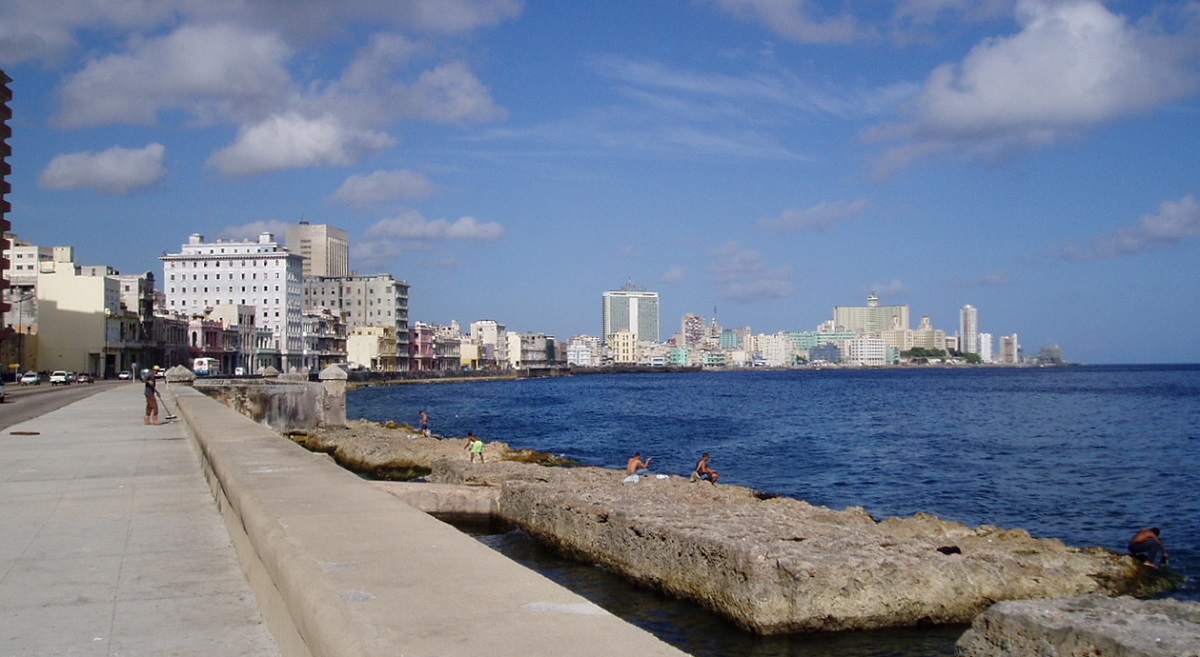
The Malecón is Havana’s famous seafront where many Cubans enjoy their leisure life at various times. Locals bathe from the Malecón while others fish or simply stroll along the water. A stroll here should be self-written as part of the visit to the Cuban capital.
The Malecón is about seven kilometers long. The most picturesque stretch is the one along the Centro district to the east. Here you can see a large number of beautifully patinated buildings in, among other things, neoclassical and Moorish-inspired styles.
The route goes from the Hotel Nacional to the entrance to Havana’s harbor, where the Castillo de San Salvador de la Puenta fortress is located. It now houses an archaeological museum, which is also worth a visit.
Paseo de Martí is a beautiful boulevard that runs along some of Havana’s most famous sights. The street is also known as Paseo del Prado, and here you can experience an active part of Havana’s everyday life, beautiful buildings, traffic and so on. A walk along the promenade should always be a must on a trip to Havana.
Paseo del Prado was given its current name in 1898 and was redesigned by French landscape architect Jean-Claude Nicolas Forestier in 1925, creating the modern boulevard. Forestier planted trees and erected benches and bronze sculptures of lions along the Paseo de Martí. Incidentally, the lions were forged from spent cannons.
Along the boulevard are important buildings such as the Gran Teatro de La Habana, hotels such as Hotel Sevilla, cinemas such as Fausto, theaters and mansions that were inspired by the architecture of not least Madrid, Paris and Vienna. By the way, El Prado was the first paved street in Havana, and this emphasized its importance.
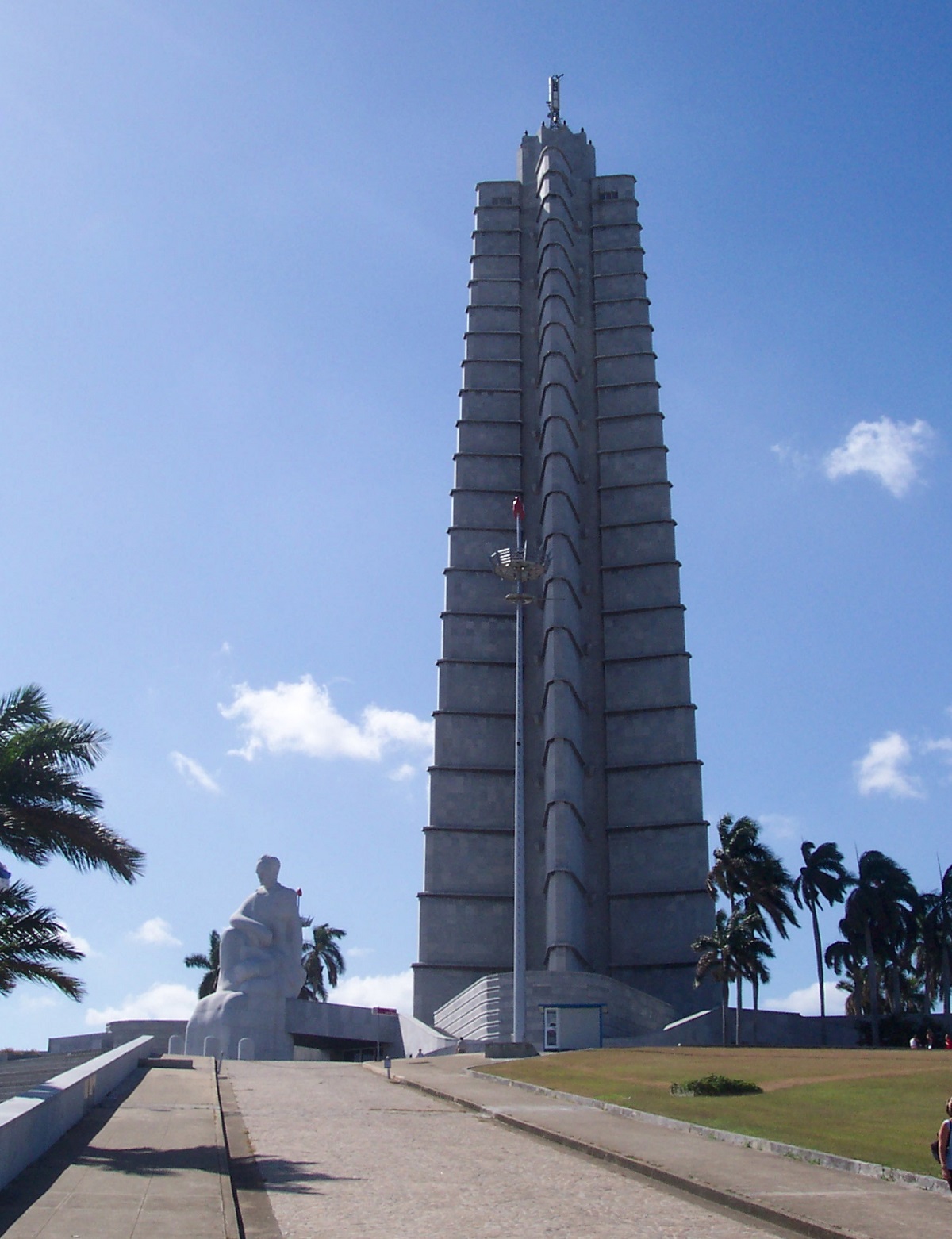
Plaza e la Revolución is Havana’s great revolution square, which is the center of the country’s government complex. Several of the square’s monumental concrete buildings were planned during the Batista regime, and the area continued to be developed after Fidel Castro’s communist revolution.
The central element of the Plaza de la Revolución is the 109 meter high monument to José Marti, the national hero of Cuba. The monument was built after several years under Fulgencio Batista in the years 1953-1958. There is a room with exhibits at the bottom of the monument and an elevator for an excellent view from the top.
At the southern end of the square is the large government building Palacio de la Revolución, where the president’s offices are located. If you turn towards the clock of the square, you can see the Ministry of Defence/Fuerzas Armadas Revolucionarias, the National Library/Biblioteca Nacional, the Ministry of Communications/Ministerio de Communicaciones, the Ministry of the Interior/Ministerio del Interior with the large Che Guevara portrait done in black metal and the National Theater/Teatro Nacional.
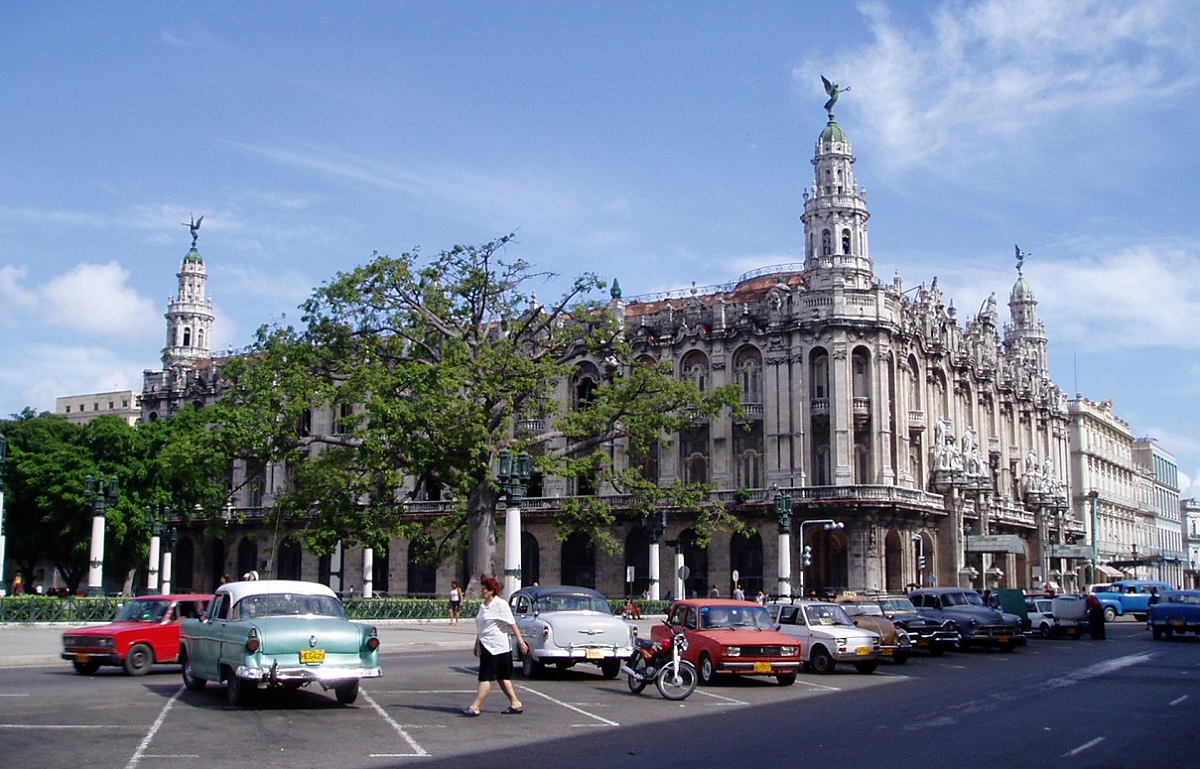
The Gran Teatro de La Habana is probably Havana’s most famous theater. The beautiful theater building is home to the Cuban National Ballet. Anna Pavlova, Sarah Bernhardt and Enrico Caruso are just a few of the many stars who have performed here over time.
The theater was designed by the Belgian architect Paul Belau and built by the engineering firm Purdy and Henderson in 1914-1915 on the site of the former Teatro Tacón, which had been here since 1838. Its construction was paid for by the Galician immigrants in Havana.
Plaza de San Francisco is one of Havana’s old and central squares. It was founded on June 2, 1628, and named after the nearby Franciscan monastery Convento de San Francisco de Asís, which had been built between 1575 and 1591. There was originally a market in the square, but it was moved to Plaza Vieja after complaints about noise from monks.
In the 18th century, the square was, in a way, the administrative center of Havana, as the city’s town hall, police authority, customs and prison were located around the Plaza de San Francisco. However, this status was not maintained.
The famous Lion Fountain/Fuente de los Leones was erected in the Plaza de San Francisco in 1836. The fountain was designed by the Italian sculptor Giuseppe Gaggini.
Later, the Lonja del Comercio stock exchange was built on the north side of the square. The Mercantile Exchange opened in 1909 and served as the city’s stock exchange building until the Cuban Revolution in 1959, after which the building was converted into offices.
To the south is the church Iglesia de San Francisco de Asis, which was built from 1548 to 1591 with consecration in 1575. The church was destroyed repeatedly in the 17th century by storms and therefore had to be rebuilt, which happened in the 18th century, where the Iglesia de San Francisco got his current appearance. After Protestant use in the British era 1762-1763, Catholics would no longer use the building as a church, and since then it has been used for storage, among other things, and today the church functions as a concert hall.
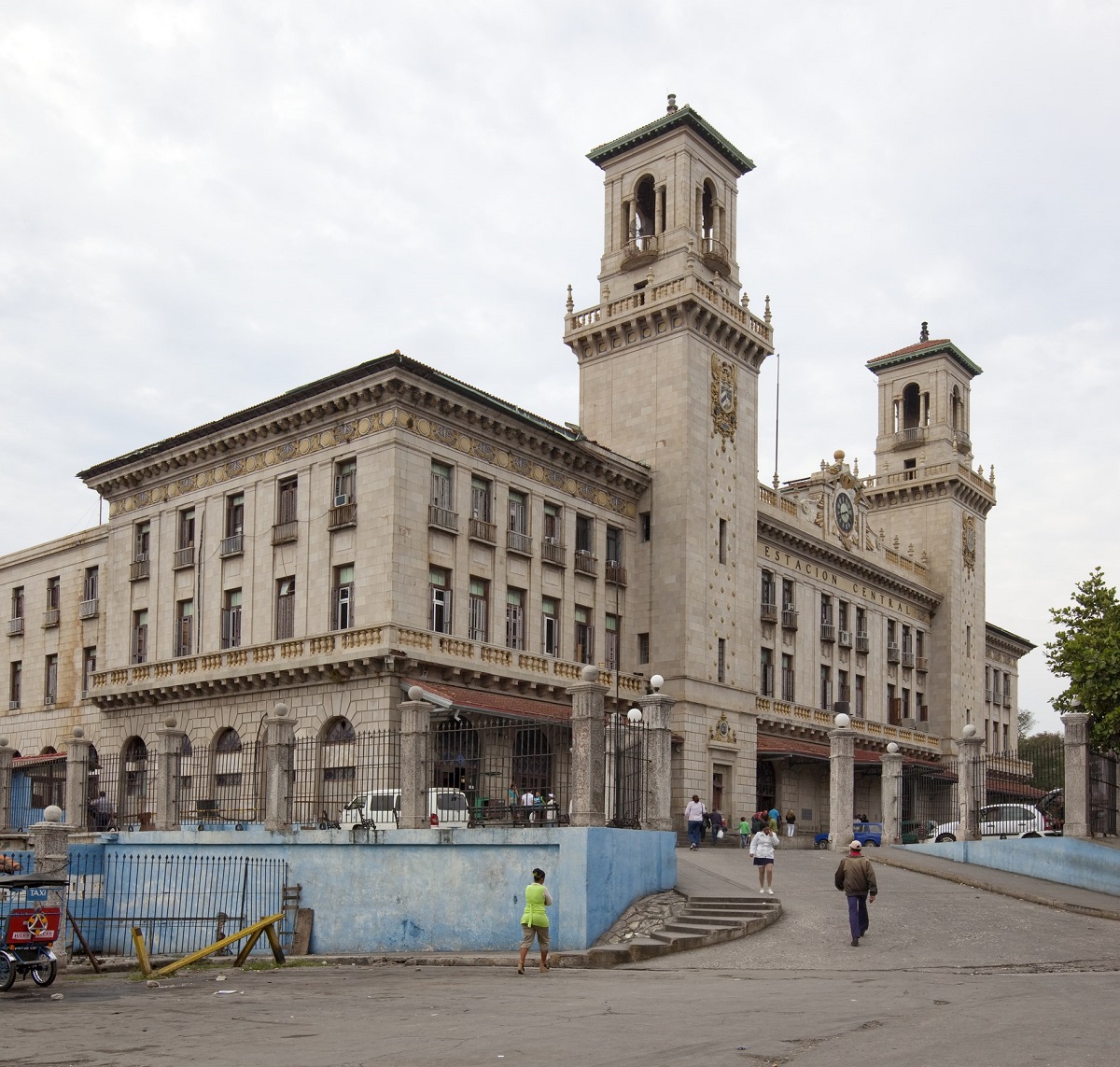
Estación Central is the name of the central station in Havana, which is the city’s main railway station and the largest station in Cuba. Local trains and trains to other parts of Cuba run from here. The railway history in Cuba started in the 1830s, and Estación Central opened in 1912 as a beautiful replacement for Estación de Villaneuva. On the station’s two towers you can see the coats of arms for Havana and Cuba, respectively.
Before Estación Central, this area was laid out as an arsenal and as a royal Spanish shipyard, where there was considerable ship production in at least the 18th century. When the then Villanueva railway station had become too small in 1910, the Cuban Congress decided to build a new central railway station on the old arsenal site. The result was the current railway station, which was built in an eclectic style.
The Museo de la Revolución is an exciting museum whose collection finely depicts Cuba’s independence and revolution era. Among the most exciting effects are Che Guevara’s beret, an American spy plane and the boat Granma, in which Fidel Castro, Che Guevara and others sailed from Mexico to Cuba in 1956.
The Revolution Museum is housed in the country’s former presidential palace, where there are some fantastic rooms such as a copy of the Hall of Mirrors from the Palace of Versailles in Paris. The presidents stayed here 1913-1959.
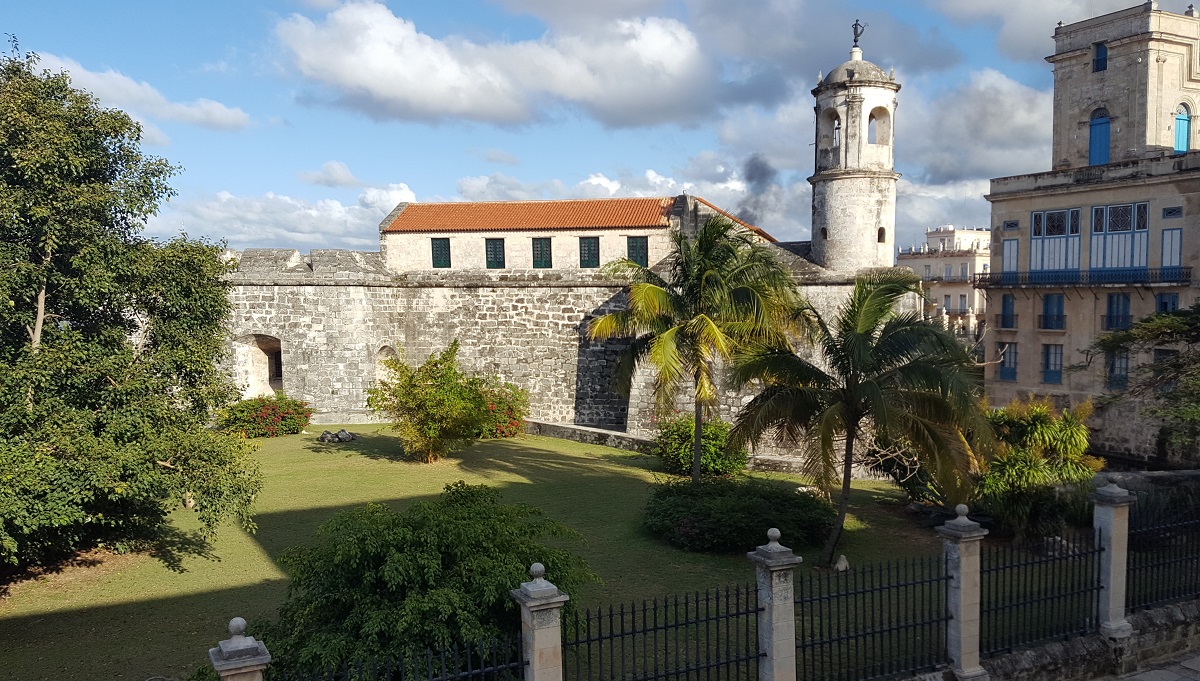
Castillo de la Fuerza or Castle of the Army is a structure that is among Havana’s oldest buildings. The fortification was built by order of the Spanish King Philip II in 1577, and it still stands well preserved with its bastions, drawbridges and cannons.
At the top of the castle you can see a statue of the city’s symbol, La Giraldilla de la Habana. La Giraldilla was married to explorer Hernando de Soto, who went to Florida to find the Fountain of Youth. He died, and for four years Giraldilla stood in the tower and watched for him.
The Museo Nacional de Bellas Artes is Cuba’s national art museum, and here you can see the country’s finest collection of Cuban art. The museum was founded in 1913, and here you can experience, among other things, fine works from the 17th-19th centuries, and there is also a large 20th-century collection.
The beautiful museum building, Palacio de Bellas Artes, was opened in 1954 after being designed by the architect Rodriguez Pichardo. In it, the museum’s Cuban works are exhibited. In the Palacio del Centro Asturiano building, which was built in 1927, you can not least see the museum’s collection of European art.
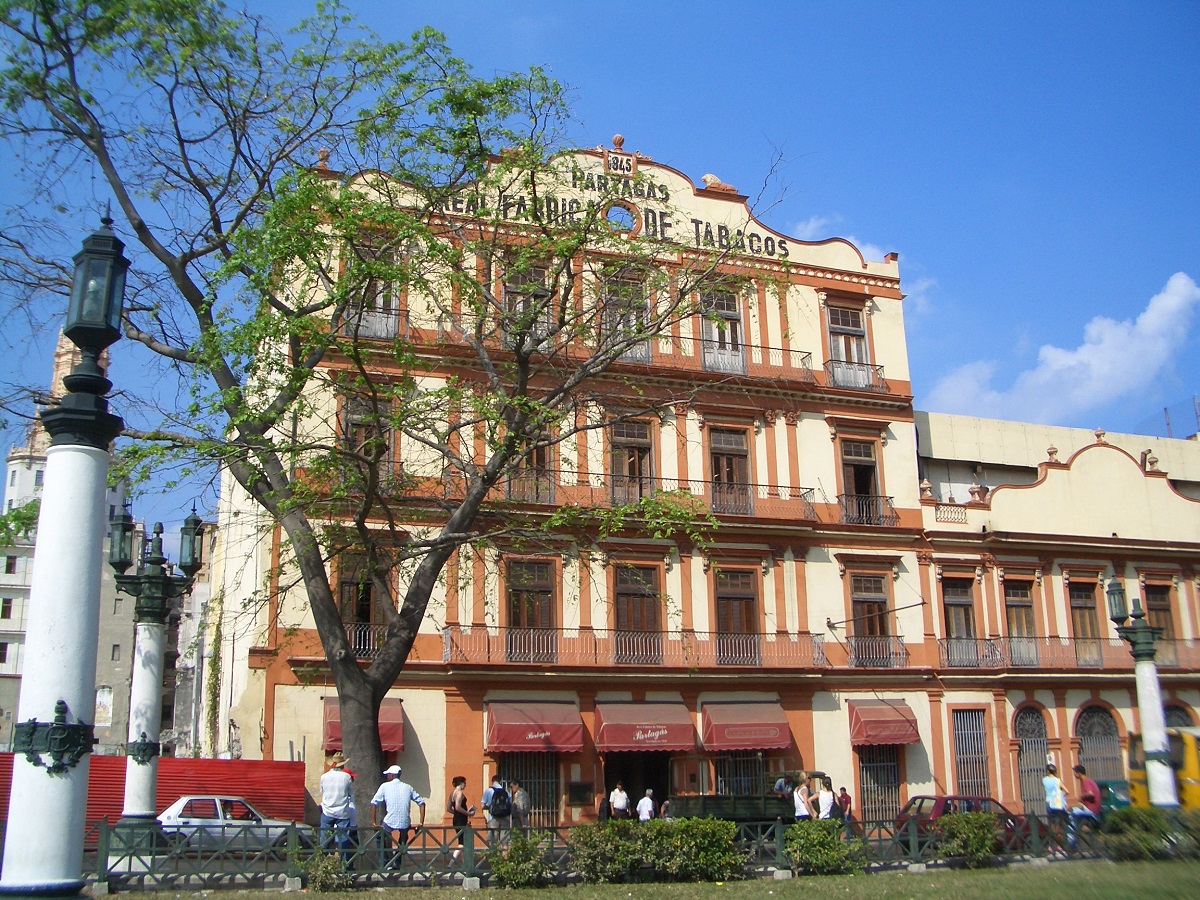
Fábrica de Tabaco Partagas is a cigar factory that is perhaps Cuba’s most famous of its kind. It was founded in 1845 and produces millions of cigars annually. You can visit the factory on an exciting tour, where you can see the production of the well-known goods.
Fabrica de Tabacos Partagas is housed in a well-preserved industrial building dating from 1845. The building is distinctive in the neighborhood with its ornate colorful maroon and cream exterior. The factory was started by Spaniard Jaime Partagas, who carefully focused on techniques to improve cigar production.
Parque Lenin is Havana’s large Lenin Park, named after Soviet leader Vladimir Lenin. In the park you can see a large monument of the communist leader Vladimir Lenin. The monument was prepared by the Soviet sculptor Lev Kerbel.
On the monument, Fidel Castro’s words about Lenin are reproduced: “Lenin was from the first moment not only a political theorist, but a man of action, a man of constant and unceasing revolutionary practice.”
Parque Lenin was largely laid out by the Cuban architect Antonio Quintana Simonetti, and it is situated as a natural park on 472 hectares. In the nice facility you can take many lovely walks and possibly a trip on the lake in a rented rowing boat.
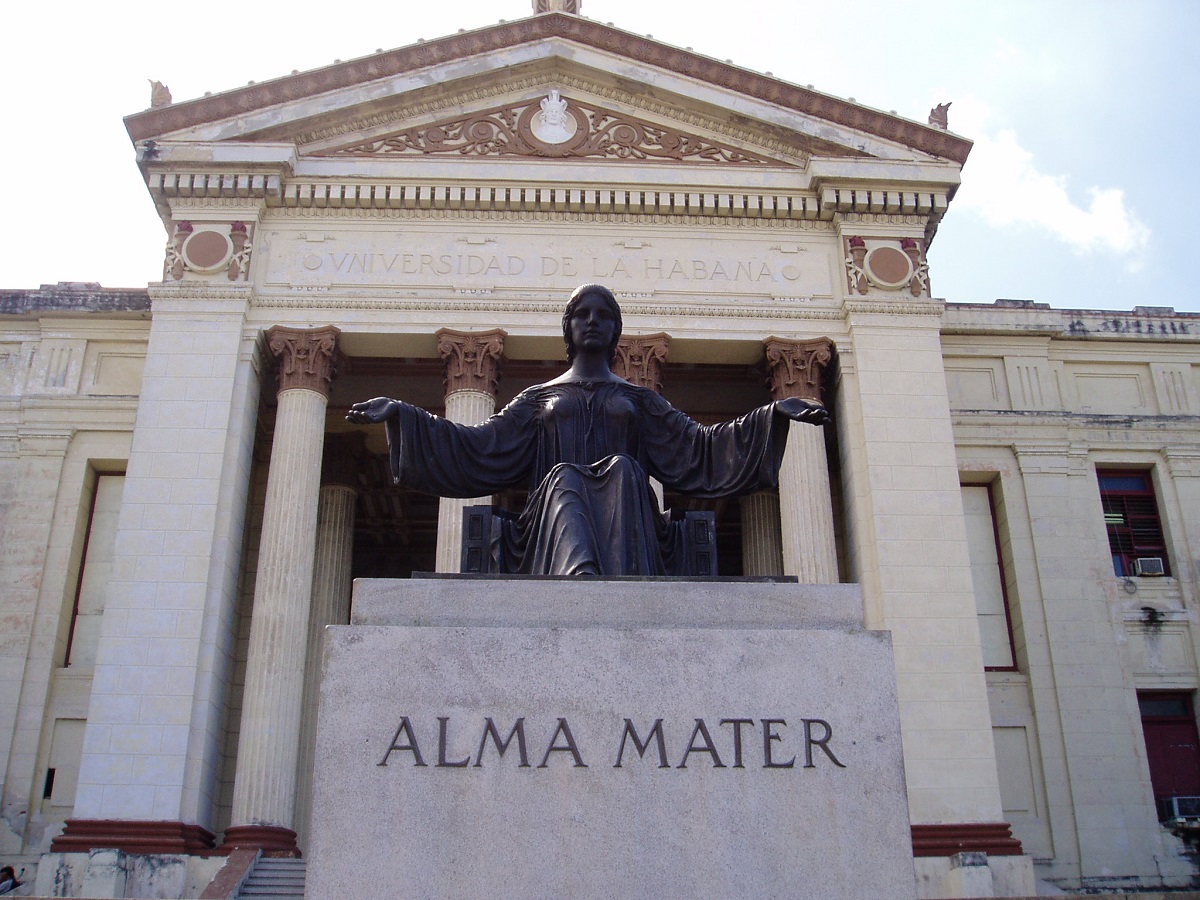
Universidad de La Habana is the University of Havana. It was founded in 1728 as the first in Cuba. Today, there are many faculties at the university, whose main building is located in the Vedado neighborhood. The most beautiful and best-known hall is the elegantly decorated Aula Magna with, among other things, impressive paintings.
It was Dominican monks who founded the university as the Real y Pontificia Universidad de San Gerónimo de la Habana, and it originally had faculties of art and philosophy, theology, canons, law and medicine. The school was moved to its current location in 1902, and in front of the main building you can see Mario Korbel’s statue of the Alma Mater from 1919.
Bodeguita del Medio is a bar in Havana that has become famous for the many famous guests who have been here over the years. The bar also believes that this is where the Mojito cocktail was invented and first served in 1942, when Bodeguita del Medio also opened.
Among the famous guests, among others Pablo Neruda, Gabriel García Márquez, Gabriela Mistral, Agustín Lara, Nat King Cole, Nicolás Guillén, Julio Cortázar, Joan Manuel Serrat, Margaux Hemingway and Salvador Allende have visited the bar. There are also stories about Ernest Hemingway and the bar, but he was reportedly not a regular here.
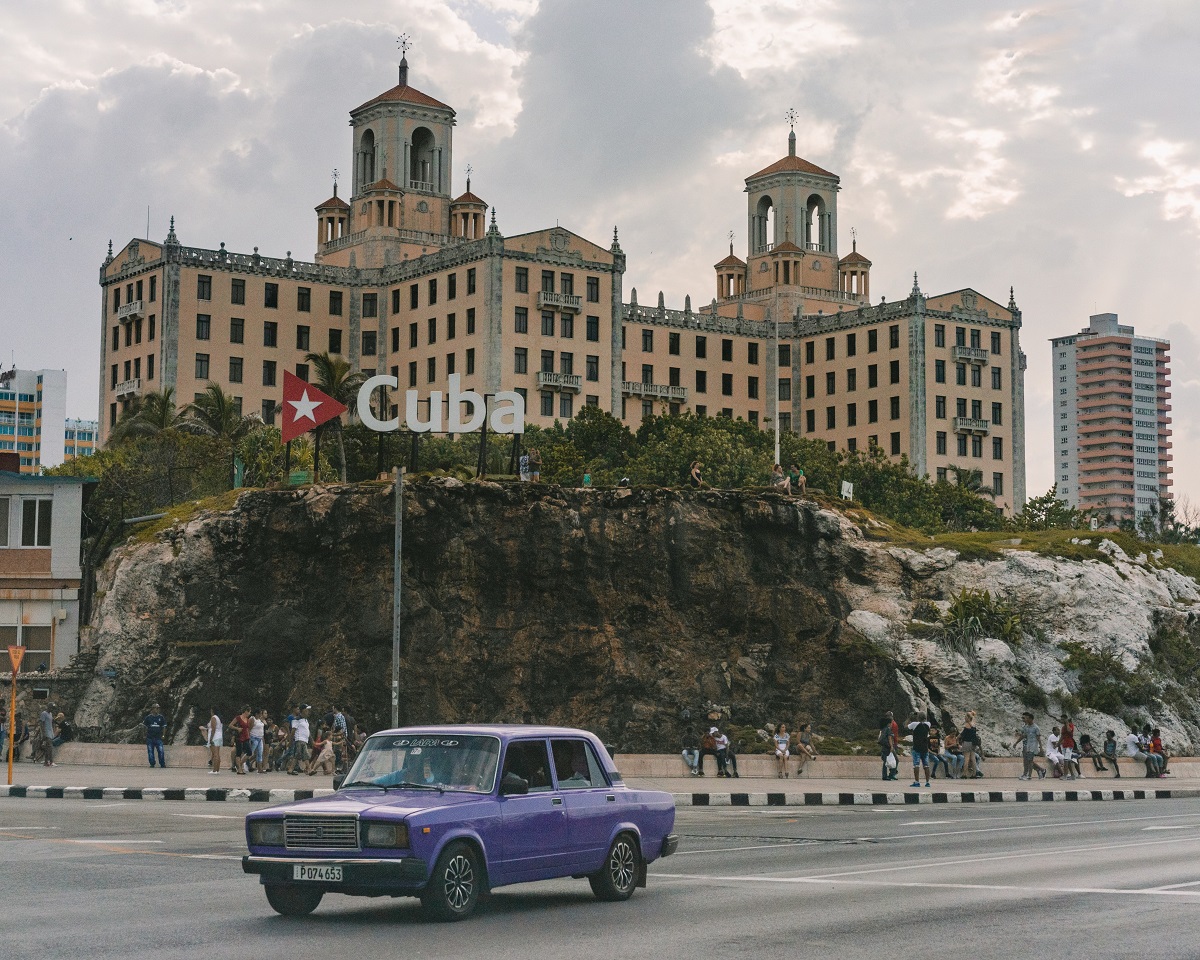
Hotel Nacional is Havana’s best-known hotel. It was built in the 1920s and opened in 1930, modeled after the Breaker’s Hotel in Palm Beach, Florida. Many famous guests have stayed here, and the so-called Havana Conference was held here in 1946.
From the hotel there is an unparalleled view of parts of Havana and the sea. Immediately north of the Hotel Nacional, along the Malecón you can see the Monumento al Maine, which is a monument erected in memory of the ship Maine. It went down in 1898 with 260 sailors.
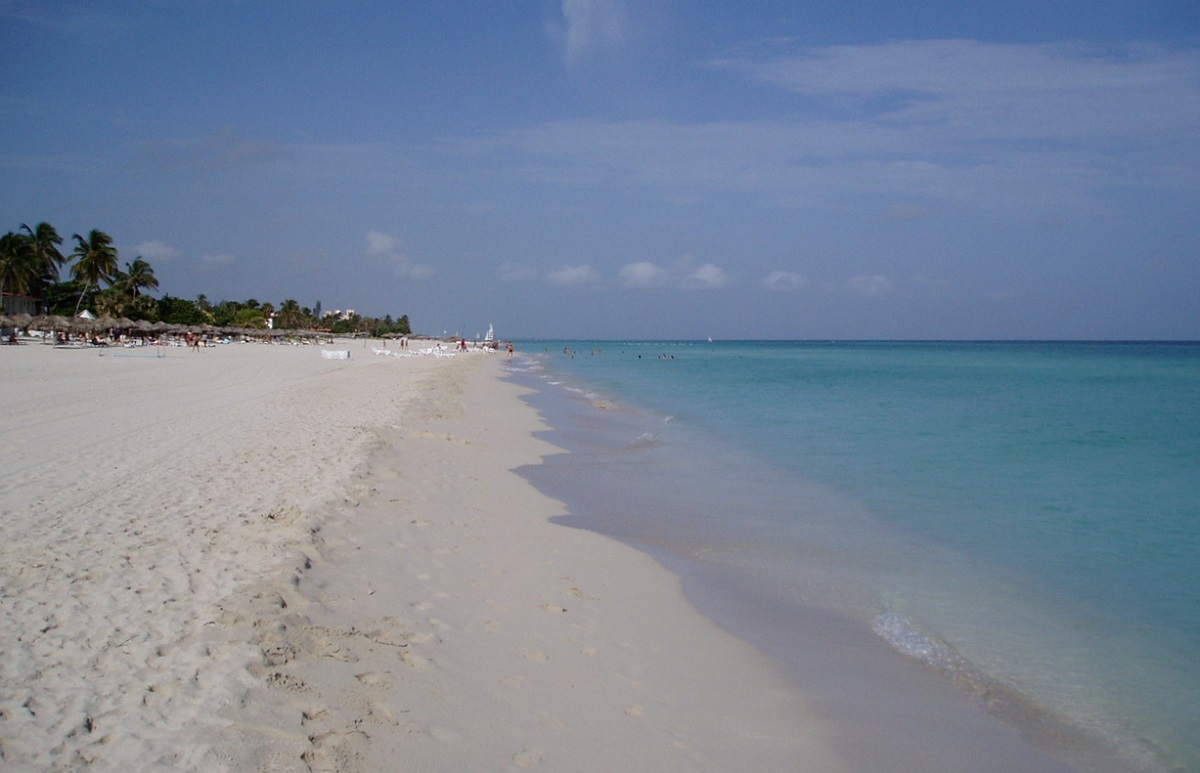
Varadero is a resort area with countless hotels along a long sandy beach that is among the Caribbean’s finest. Varadero is located on the Península de Hicacos isthmus northeast of the city of Matanzas, and it is an excellent place for, for example, a family holiday along the beach. The place is good for snorkelling, diving and golf, among other things.
Varadero lies with hotels and activities like pearls on a string along wonderful beaches on the isthmus, which is only 1,200 meters wide at its widest point. The strait is 20 kilometers long, and the point Punta Hicacos is the northernmost point of the island of Cuba.
Varadero’s history as an actual settlement and town began in 1887, when ten families were given permission to build holiday homes here. Over the years, more and more mansions were built here, and you can still see some of the houses from the time before the Cuban revolution. Later, the many hotels and other facilities were built.
Matanzas is the capital of the province of the same name, and it is a cozy provincial town with several attractions. A good place to start is the central square, Plaza de la Libertad, where there is a pleasant park and fine buildings. You can also see the beautiful Teatro Sauto from 1863, the Cathedral of San Carlos Borromeo and the Necropolis de San Carlos Borromeo.
Matanzas was founded in 1693 as San Carlos y San Severino de Matanzas, which later became simply Matanzas. The foundation followed a royal decree that the place should be settled by 30 families from the Canary Islands. During the colonial period, the town was developed with plantations in the area, and many African slaves were brought here for sugar production.
If you want to learn more about the history and culture of Matanzas, you can visit the Museo Histórico Provincial de Matanzas. The museum is located in the Palacio de Junco building, which was built for the del Junco family in 1835-1838. The house is a beautiful example of a 19th-century mansion, and at the museum you can see interesting exhibits.
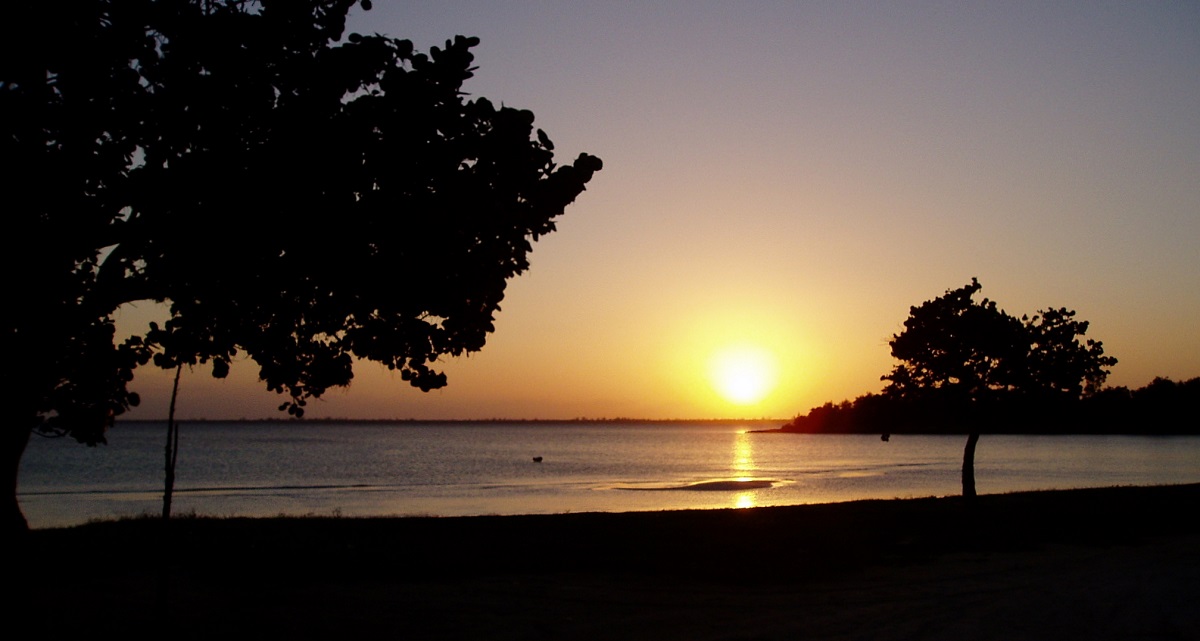
Bahia de Cochinos or the Bay of Pigs is an area that became famous in history for the failed American invasion of Cuba in 1961. It is also an area where you can enjoy some amazing beaches with the warm waters of the Caribbean. On the stretch between the towns of Playa Larga and Playa Girón, there are many options for a swim. You can, for example, take a dip in the sea or in the beautiful lake, Cueva de los Peces.
Bahia de Cochinos became famous in 1961, when Playa Girón and Playa Larga were landing sites for seaborne forces of armed Cuban exiles and airstrips for some American aircraft. It was an action that the United States was behind in an attempt to overthrow the Cuban government, which was led by Fidel Castro.
Parque Central
Avenida Salvador Allende
Calle Obispo, Vedado, Plaza de Armas, Parque Céspedes
Acuario Nacional
Avenida 3/Calle 62, Miramar
acuarionacional.cu
Parque Zoológico Nacional
Avenida de la Independencia, Carretera de Capdevila, Boyeros
Playa de Este & Villa Pan Americana
Museo del Ferrocarril de Cuba
Calle Cristina y Arroyo
cnpc.cult.cu
Maqueta de la Habana
Calle 28 113, Miramar
Prior to the arrival of Christoffer Columbus in Cuba’s eastern part in 1492, several local tribes had lived on the island for a long period. Founded as the capital of the new Spanish country, Baracoa later became an important center for colonization of the American mainland.
Havana was founded by Spanish explorer Diego Velázquez de Cuéllar at the entrance to the natural harbor of the then-named Carenas Bay in 1519. De Cuéllar had tried a few earlier locations of the city since 1515, but this failed due to the swampy soil of the first elected places.
Havana was far from the Spanish administrative center of the island, and it therefore developed primarily thanks to its convenient location on the transport route between Spain and the American mainland. The city grew steadily through the 16th century and in 1607 it was made the country’s capital.
Throughout the 1600s-1700s, Spanish Cuba developed mainly through the extraction of raw materials and cultivation of, among other things. tobacco and the main crop sugar.
Spain became involved in the Seven-Day War between Great Britain and France, and the British used their force to besiege and conquer Havana in 1762. The British stayed here for 11 months, after which Spain regained dominion over the city through a barter with Florida as effort.
The intense production of the island’s plantations had gradually increased the number of slaves to almost half of Cuba’s inhabitants. It was in the first half of the 19th century, when there were two revolts against the Spanish government, in 1812 and 1848, and both times the rebellion was turned down. Far from the plantations, during this period, some fine mansions and public buildings such as the Gran Teatro were built in Havana.
A growing portion of Cuba’s population, including many of the Spanish descendants, joined the idea of an independent nation, and in 1868 the first war of independence broke out, which Spain won after ten years of struggle.
José Martí, for which monuments are seen in i.a. Havana today, founded the Cuban Revolutionary Party, the PRC, in 1892, three years later the Second War of Independence broke out, and in 1898 the Spanish government surrendered. Cuba formally became an independent republic in 1902, and now under the strong influence of the United States, which came to dominate the Havana of the 20th century. The most visible result is the Capitolio government building, thought to be a replica of the US Congress building in Washington, which is reminiscent of every US federal government seat.
During the Prohibition period in the United States in the first half of the 1900s, the arid US wealthy and also some criminals sought Cuba, where they could live a wild life and make a lot of money. Havana was just 150 miles from Florida, creating a colossal activity in the Cuban capital. Luxurious hotels like Nacional, restaurants, clubs and cabarets like Tropicana were popping up everywhere and welcoming Americans. It became the starting point for Havana’s lavish life, which attracted many with its extravagance and pleasant tropical climate.
The American presence created an economic boom in the city that had not been seen before, but at the same time, this development created increasing social problems for many of Cuba’s poor population groups who did not share in the relatively high affluence by South and Central American standards.
Cuba had been led by Colonel Fulgencio Batista since 1933, whose rule was abruptly halted in 1959, when Fidel Castro, after sailing with some of his people from Mexico to eastern Cuba, had begun the struggle for a Cuban revolution three years earlier was a reality. Batista had to flee Cuba, and Fidel Castro became a new ruler.
In 1961, a US-backed invasion attempt in the Bay of Pigs was turned down, and the same year Fidel Castro declared himself a Communist. The tropical island state now became part of the Soviet Union’s sphere of interest, and the United States stopped its diplomatic ties to the country. From this year, Cuba developed significantly politically and socio-economically differently from the surrounding countries. massive investments were made in a health and education system that became among the best in the region. In 1989-1990, the Soviet-dominated Eastern bloc in Europe changed significantly with the implementation of system changes in a number of countries, which led to increasing integration with Western Europe. It caused a major economic setback for Cuba, which, to offset the lost annual support of the Soviet Union, opened to tourism.
In 1991, the Pan-American Games were held in Havana, and in this connection, an expansion took place in the eastern suburbs, and it was also at this time that the renovation of the historic buildings of the old town, Habana Vieja, was initiated.
In 1998, Pope John Paul II came to Cuba, and in Havana he held a Mass in the Cathedral. The church as well as the square and the streets in front were filled with people, which also happens at the annual May 1 events taking place at Plaza de la Revolución.
Today, the renovation of Havana is in full swing. Large parts are beautiful in the old days, and the tourism industry is developing rapidly in the capital of the Caribbean’s most exciting travel destination.

Overview of Havana
Havana, with its two million inhabitants, is the largest city in the Caribbean and at the same time one of the most attractive and charming ones. The happy Cuban soul is everywhere, and the beautiful setting with the many old and colorful buildings from the colonial era as well as the abundance of 1950s American cars make the city unique in the world.
Cuba has an attractiveness like few other places. The story of Fidel Castro’s Communist Cuba in the tropics just a few miles from the United States has been a source of inspiration to many and to the annoyance of others. Whatever one thinks, the Cuban people and country provide unforgettable times.
About the upcoming Havana travel guide
About the travel guide
The Havana travel guide gives you an overview of the sights and activities of the Cuban city. Read about top sights and other sights, and get a tour guide with tour suggestions and detailed descriptions of all the city’s most important churches, monuments, mansions, museums, etc.
Havana is waiting for you, and at vamados.com you can also find cheap flights and great deals on hotels for your trip. You just select your travel dates and then you get flight and accommodation suggestions in and around the city.
Read more about Havana and Cuba
Buy the travel guide
Click the “Add to Cart” button to purchase the travel guide. After that you will come to the payment, where you enter the purchase and payment information. Upon payment of the travel guide, you will immediately receive a receipt with a link to download your purchase. You can download the travel guide immediately or use the download link in the email later.
Use the travel guide
When you buy the travel guide to Havana you get the book online so you can have it on your phone, tablet or computer – and of course you can choose to print it. Use the maps and tour suggestions and you will have a good and content-rich journey.
Malecon • Vintage Cars • Capitolio • Pastel Colors • Plaza de Armas

Overview of Havana
Havana, with its two million inhabitants, is the largest city in the Caribbean and at the same time one of the most attractive and charming ones. The happy Cuban soul is everywhere, and the beautiful setting with the many old and colorful buildings from the colonial era as well as the abundance of 1950s American cars make the city unique in the world.
Cuba has an attractiveness like few other places. The story of Fidel Castro’s Communist Cuba in the tropics just a few miles from the United States has been a source of inspiration to many and to the annoyance of others. Whatever one thinks, the Cuban people and country provide unforgettable times.
About the upcoming Havana travel guide
About the travel guide
The Havana travel guide gives you an overview of the sights and activities of the Cuban city. Read about top sights and other sights, and get a tour guide with tour suggestions and detailed descriptions of all the city’s most important churches, monuments, mansions, museums, etc.
Havana is waiting for you, and at vamados.com you can also find cheap flights and great deals on hotels for your trip. You just select your travel dates and then you get flight and accommodation suggestions in and around the city.
Read more about Havana and Cuba
Buy the travel guide
Click the “Add to Cart” button to purchase the travel guide. After that you will come to the payment, where you enter the purchase and payment information. Upon payment of the travel guide, you will immediately receive a receipt with a link to download your purchase. You can download the travel guide immediately or use the download link in the email later.
Use the travel guide
When you buy the travel guide to Havana you get the book online so you can have it on your phone, tablet or computer – and of course you can choose to print it. Use the maps and tour suggestions and you will have a good and content-rich journey.

The Gran Teatro de La Habana is probably Havana’s most famous theater. The beautiful theater building is home to the Cuban National Ballet. Anna Pavlova, Sarah Bernhardt and Enrico Caruso are just a few of the many stars who have performed here over time.
The theater was designed by the Belgian architect Paul Belau and built by the engineering firm Purdy and Henderson in 1914-1915 on the site of the former Teatro Tacón, which had been here since 1838. Its construction was paid for by the Galician immigrants in Havana.
Plaza de San Francisco is one of Havana’s old and central squares. It was founded on June 2, 1628, and named after the nearby Franciscan monastery Convento de San Francisco de Asís, which had been built between 1575 and 1591. There was originally a market in the square, but it was moved to Plaza Vieja after complaints about noise from monks.
In the 18th century, the square was, in a way, the administrative center of Havana, as the city’s town hall, police authority, customs and prison were located around the Plaza de San Francisco. However, this status was not maintained.
The famous Lion Fountain/Fuente de los Leones was erected in the Plaza de San Francisco in 1836. The fountain was designed by the Italian sculptor Giuseppe Gaggini.
Later, the Lonja del Comercio stock exchange was built on the north side of the square. The Mercantile Exchange opened in 1909 and served as the city’s stock exchange building until the Cuban Revolution in 1959, after which the building was converted into offices.
To the south is the church Iglesia de San Francisco de Asis, which was built from 1548 to 1591 with consecration in 1575. The church was destroyed repeatedly in the 17th century by storms and therefore had to be rebuilt, which happened in the 18th century, where the Iglesia de San Francisco got his current appearance. After Protestant use in the British era 1762-1763, Catholics would no longer use the building as a church, and since then it has been used for storage, among other things, and today the church functions as a concert hall.

Estación Central is the name of the central station in Havana, which is the city’s main railway station and the largest station in Cuba. Local trains and trains to other parts of Cuba run from here. The railway history in Cuba started in the 1830s, and Estación Central opened in 1912 as a beautiful replacement for Estación de Villaneuva. On the station’s two towers you can see the coats of arms for Havana and Cuba, respectively.
Before Estación Central, this area was laid out as an arsenal and as a royal Spanish shipyard, where there was considerable ship production in at least the 18th century. When the then Villanueva railway station had become too small in 1910, the Cuban Congress decided to build a new central railway station on the old arsenal site. The result was the current railway station, which was built in an eclectic style.
The Museo de la Revolución is an exciting museum whose collection finely depicts Cuba’s independence and revolution era. Among the most exciting effects are Che Guevara’s beret, an American spy plane and the boat Granma, in which Fidel Castro, Che Guevara and others sailed from Mexico to Cuba in 1956.
The Revolution Museum is housed in the country’s former presidential palace, where there are some fantastic rooms such as a copy of the Hall of Mirrors from the Palace of Versailles in Paris. The presidents stayed here 1913-1959.

Castillo de la Fuerza or Castle of the Army is a structure that is among Havana’s oldest buildings. The fortification was built by order of the Spanish King Philip II in 1577, and it still stands well preserved with its bastions, drawbridges and cannons.
At the top of the castle you can see a statue of the city’s symbol, La Giraldilla de la Habana. La Giraldilla was married to explorer Hernando de Soto, who went to Florida to find the Fountain of Youth. He died, and for four years Giraldilla stood in the tower and watched for him.
The Museo Nacional de Bellas Artes is Cuba’s national art museum, and here you can see the country’s finest collection of Cuban art. The museum was founded in 1913, and here you can experience, among other things, fine works from the 17th-19th centuries, and there is also a large 20th-century collection.
The beautiful museum building, Palacio de Bellas Artes, was opened in 1954 after being designed by the architect Rodriguez Pichardo. In it, the museum’s Cuban works are exhibited. In the Palacio del Centro Asturiano building, which was built in 1927, you can not least see the museum’s collection of European art.

Fábrica de Tabaco Partagas is a cigar factory that is perhaps Cuba’s most famous of its kind. It was founded in 1845 and produces millions of cigars annually. You can visit the factory on an exciting tour, where you can see the production of the well-known goods.
Fabrica de Tabacos Partagas is housed in a well-preserved industrial building dating from 1845. The building is distinctive in the neighborhood with its ornate colorful maroon and cream exterior. The factory was started by Spaniard Jaime Partagas, who carefully focused on techniques to improve cigar production.
Parque Lenin is Havana’s large Lenin Park, named after Soviet leader Vladimir Lenin. In the park you can see a large monument of the communist leader Vladimir Lenin. The monument was prepared by the Soviet sculptor Lev Kerbel.
On the monument, Fidel Castro’s words about Lenin are reproduced: “Lenin was from the first moment not only a political theorist, but a man of action, a man of constant and unceasing revolutionary practice.”
Parque Lenin was largely laid out by the Cuban architect Antonio Quintana Simonetti, and it is situated as a natural park on 472 hectares. In the nice facility you can take many lovely walks and possibly a trip on the lake in a rented rowing boat.

Universidad de La Habana is the University of Havana. It was founded in 1728 as the first in Cuba. Today, there are many faculties at the university, whose main building is located in the Vedado neighborhood. The most beautiful and best-known hall is the elegantly decorated Aula Magna with, among other things, impressive paintings.
It was Dominican monks who founded the university as the Real y Pontificia Universidad de San Gerónimo de la Habana, and it originally had faculties of art and philosophy, theology, canons, law and medicine. The school was moved to its current location in 1902, and in front of the main building you can see Mario Korbel’s statue of the Alma Mater from 1919.
Bodeguita del Medio is a bar in Havana that has become famous for the many famous guests who have been here over the years. The bar also believes that this is where the Mojito cocktail was invented and first served in 1942, when Bodeguita del Medio also opened.
Among the famous guests, among others Pablo Neruda, Gabriel García Márquez, Gabriela Mistral, Agustín Lara, Nat King Cole, Nicolás Guillén, Julio Cortázar, Joan Manuel Serrat, Margaux Hemingway and Salvador Allende have visited the bar. There are also stories about Ernest Hemingway and the bar, but he was reportedly not a regular here.

Hotel Nacional is Havana’s best-known hotel. It was built in the 1920s and opened in 1930, modeled after the Breaker’s Hotel in Palm Beach, Florida. Many famous guests have stayed here, and the so-called Havana Conference was held here in 1946.
From the hotel there is an unparalleled view of parts of Havana and the sea. Immediately north of the Hotel Nacional, along the Malecón you can see the Monumento al Maine, which is a monument erected in memory of the ship Maine. It went down in 1898 with 260 sailors.
Similar to Havana Travel Guide